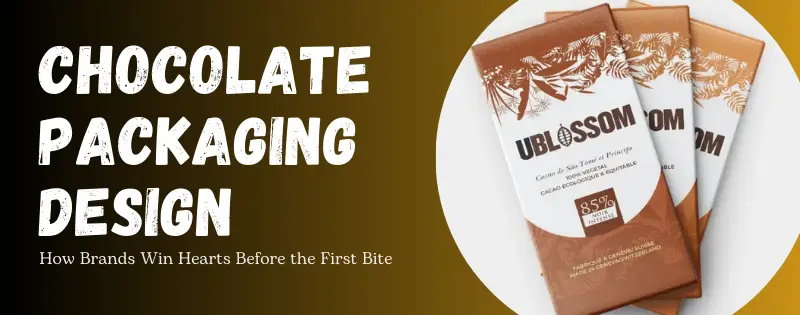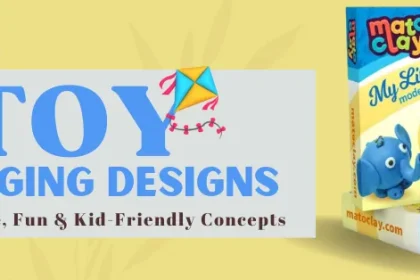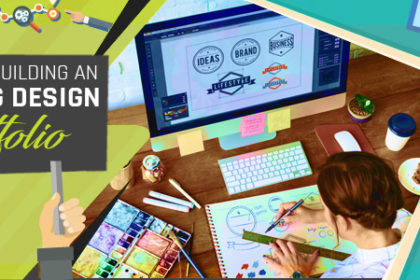When you think of chocolate, what comes to your mind first? For some, it is the smooth taste that melts in the mouth. But for many, the first impression actually comes from something outside the chocolate—the packaging. A beautifully designed wrapper can spark curiosity, create excitement, and even make you feel the chocolate tastes better before you open it.
This is the power of chocolate packaging design. In today’s world, where people have endless options on supermarket shelves, packaging does not just protect the product. It also tells a story, builds a connection, and makes one chocolate brand stand out from the others.
In this blog, we will explore why chocolate packaging matters, the key elements of successful design, the trends shaping the industry, and how brands can use packaging to win customer trust and loyalty.
Why Packaging Matters in the Chocolate Industry
Experts in food branding agree that packaging is one of the most important touchpoints between the customer and the product. Chocolates are often bought as gifts, impulse treats, or indulgent purchases. That means packaging needs to:
- Attract Attention – A unique design helps a chocolate bar stand out on crowded shelves.
- Communicate Quality – Colors, textures, and finishes often suggest whether a chocolate is premium, mass-market, or artisanal.
- Create Emotional Connection – Good packaging design evokes feelings—luxury, nostalgia, happiness, or even playfulness.
- Build Trust – Transparent labeling, eco-friendly material, and honest messaging make people trust the brand.
Think of luxury chocolates wrapped in matte black boxes with gold embossing versus fun, colorful wrappers aimed at children. Both serve the same purpose—selling chocolate—but they do so by speaking to very different emotions.
Elements of Great Chocolate Packaging Design
A chocolate wrapper is more than paper. It is a smart design canvas where creativity meets psychology. Successful chocolate packaging design usually includes:
1. Color Psychology
Colors play a huge role in how customers perceive chocolate.
- Brown and earthy tones suggest richness and authenticity.
- Gold and silver give a premium, luxury feel.
- Bright colors (red, yellow, pink) make the product playful and fun.
For example, dark chocolate brands often use minimalistic black or deep brown packaging to communicate boldness, while milk chocolate uses lighter, softer colors to feel approachable.

Source: in.pinterest.com

Source: in.pinterest.com

Source: in.pinterest.com
2. Typography
Fonts tell their own story. A handwritten-style font may give an artisanal vibe, while sleek modern fonts feel premium and stylish. Typography must be easy to read while also fitting the brand’s identity.

Source: in.pinterest.com

Source: in.pinterest.com
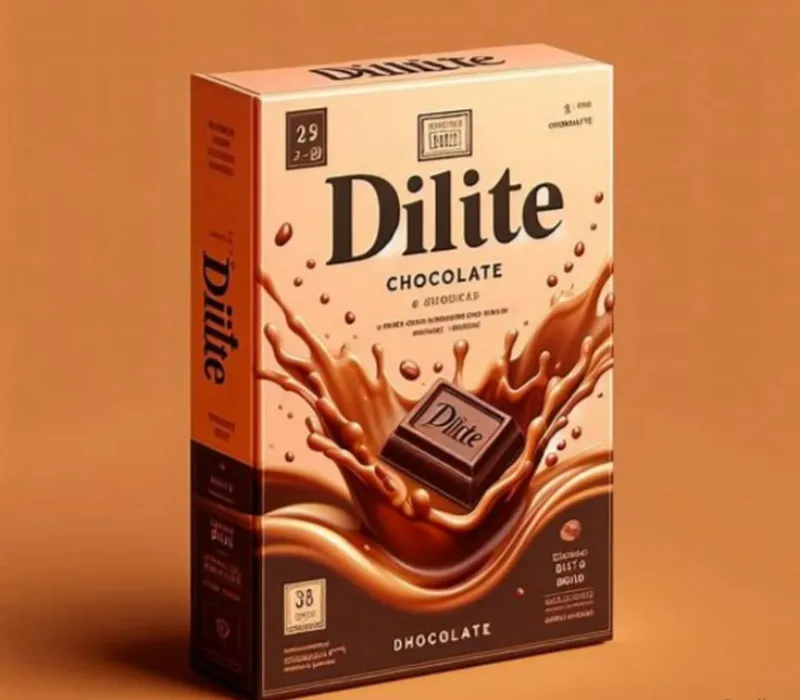
Source: in.pinterest.com
3. Material Choice
Beyond looks, packaging materials are becoming more important. Many brands are moving away from plastic to paper-based or compostable wrappers. This shift not only supports sustainability but also adds value to the brand story. A customer today is more likely to choose a chocolate wrapped in eco-friendly material than one wrapped in shiny plastic.
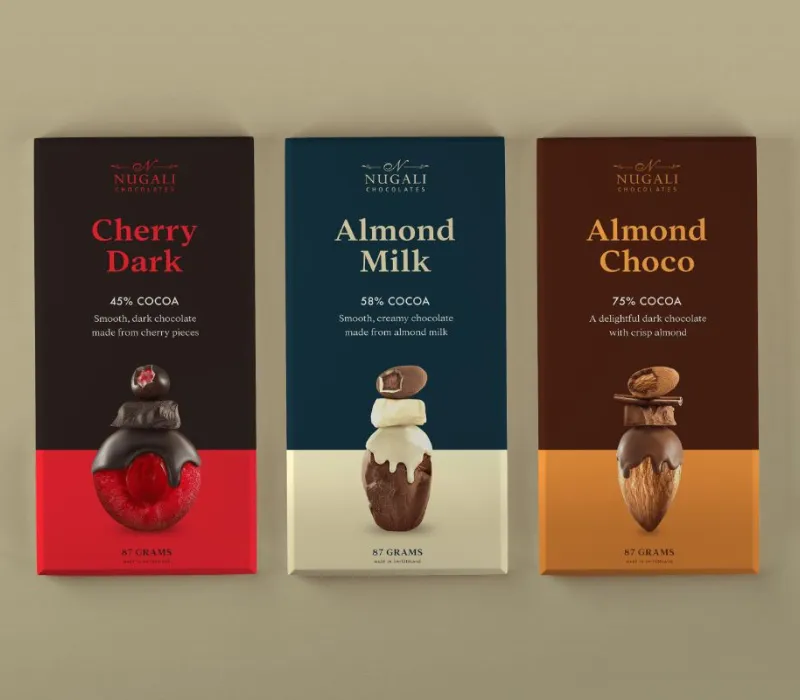
Source: in.pinterest.com
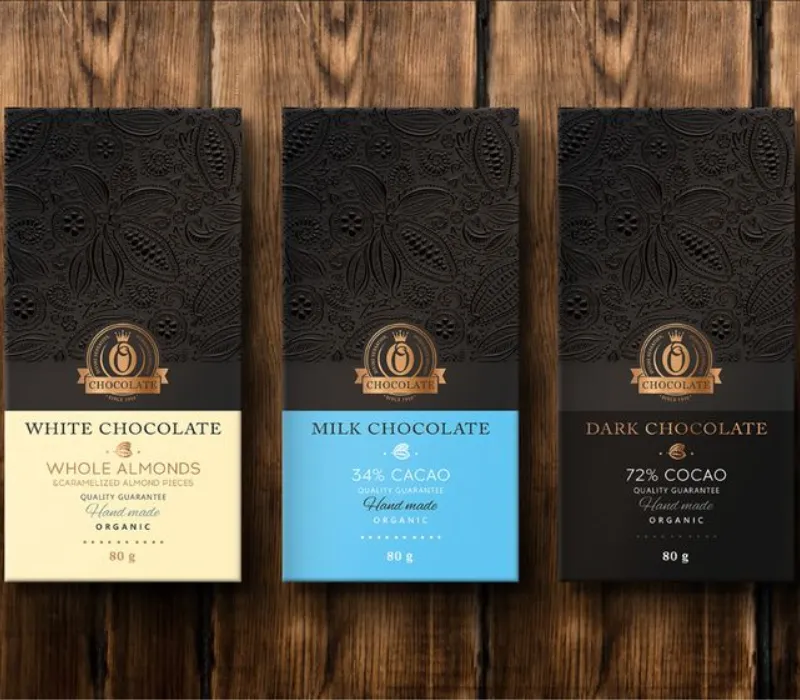
Source: in.pinterest.com
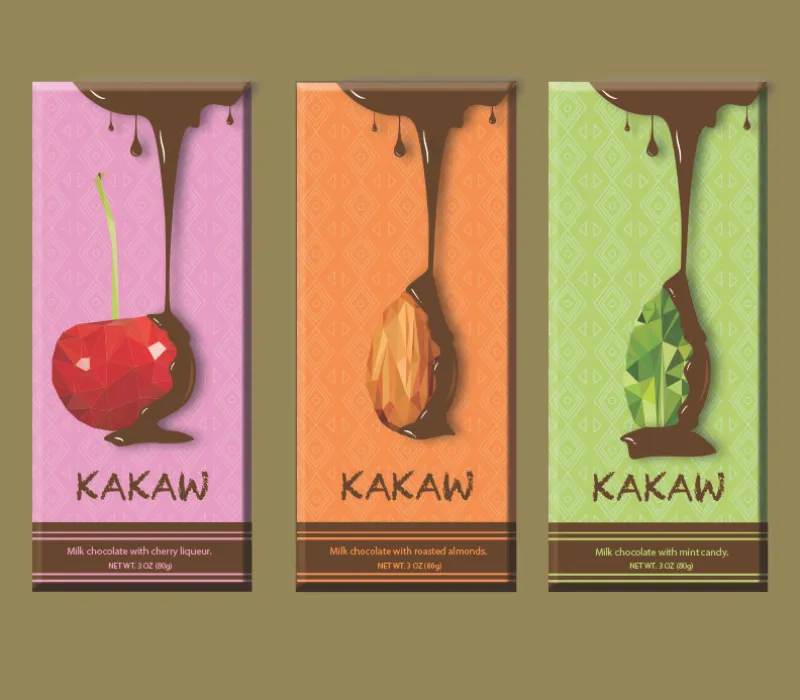
Source: in.pinterest.com
4. Imagery and Storytelling
Designs that include illustrations, cocoa bean graphics, or local cultural patterns help tell a story. For example, a Swiss chocolate brand might use mountain imagery, while an Indian artisanal brand may include traditional art.
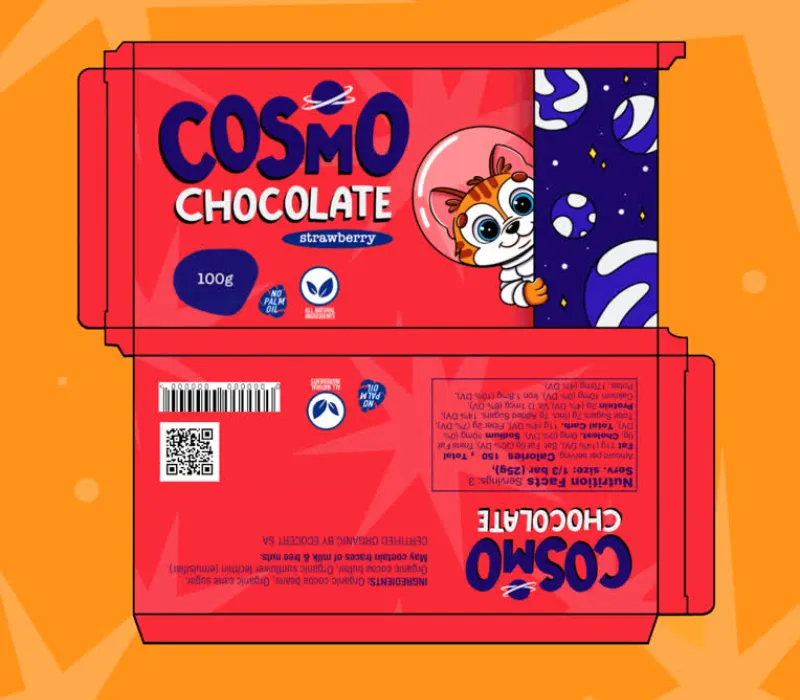
Source: in.pinterest.com

Source: in.pinterest.com
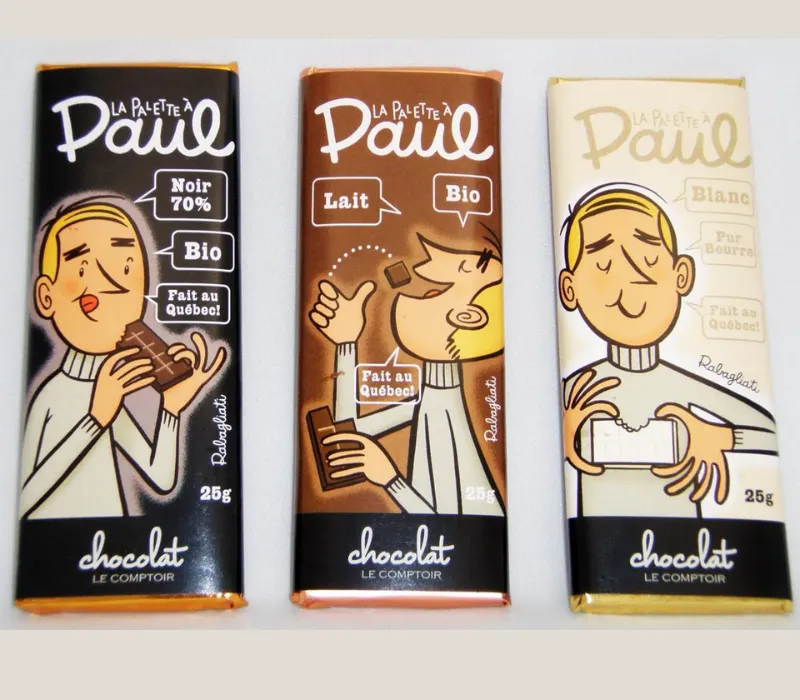
Source: in.pinterest.com
5. Practicality
While looks matter, packaging also has to be functional. It should keep the chocolate fresh, easy to open, and resealable if needed. Here’s where the term bar packaging design often comes in. Chocolate bars especially need packaging that balances functionality and visual appeal.

Source: in.pinterest.com

Source: in.pinterest.com

Source: in.pinterest.com
The Role of Branding in Chocolate Packaging
A wrapper is often the first advertisement for a brand. The logo, tagline, and consistent design language help customers remember and return to the same chocolate. Branding in packaging also helps with gifting. Imagine walking into a store to buy a gift box. You will probably choose the one that looks most premium and festive, even if the actual chocolate quality is similar.
Strong branding through packaging can:
- Build instant recognition (think of the red KitKat wrapper).
- Create emotional value (luxury boxes for Valentine’s Day).
- Support brand storytelling (fair-trade cocoa, organic farming, artisanal craft).
Trends Shaping Chocolate Packaging Design
Like fashion, packaging also follows trends. Here are some that are shaping chocolate packaging today:
1. Minimalism
Clean lines, solid colors, and simple fonts are becoming popular. Less clutter helps highlight the brand name and creates a modern, premium feel.
2. Sustainability
Eco-friendly packaging is no longer an option—it’s an expectation. Brands using recyclable, compostable, or biodegradable wrappers are winning customer loyalty.
3. Personalization
Customized packaging for festivals, birthdays, and weddings is a growing trend. This helps chocolates become more than food; they turn into memorable gifts.
4. Cultural & Local Design
Many artisanal brands are using local cultural motifs, hand-drawn illustrations, and region-based stories. This gives authenticity and connects the chocolate with a place or tradition.
5. Interactive & Smart Packaging
QR codes, augmented reality (AR), and scannable designs allow customers to engage with the brand digitally. Some luxury brands even add hidden stories or videos that unlock when scanned.
Chocolate Packaging and Consumer Psychology
Why do we sometimes buy a new chocolate brand just because we liked the wrapper? That’s consumer psychology at work. Packaging triggers subconscious emotions.
- Luxury finishes (gold foiling, embossing) signal exclusivity.
- Playful designs attract children and young buyers.
- Eco-friendly materials connect with health-conscious and socially aware customers.
In short, packaging can influence taste expectations. Research shows people often say a chocolate “tastes better” when it comes in a high-quality wrapper compared to a plain one—even if the chocolate is identical.
Case Studies: Brands That Nailed Packaging
- Lindt – Their gold foil-wrapped bunny has become iconic during Easter. It blends tradition with premium appeal.
- KitKat – Simple red and white wrapper that is instantly recognizable worldwide.
- Tony’s Chocolonely – Bright, playful, eco-friendly wrappers that also highlight the brand’s mission of fair trade.
- Hershey’s Kisses – The little paper plume sticking out is not just functional but has become a brand identity symbol.
These examples show how packaging, when done right, can make a product timeless.
Future of Chocolate Packaging
Looking ahead, we can expect packaging to become:
- More sustainable with zero-waste concepts.
- More personalized for events and gifting.
- More interactive with digital elements.
- More sensory with textured finishes and even scents on wrappers.
The goal will remain the same: to make customers feel something special before they even taste the chocolate.
Conclusion
Chocolate packaging design is more than just wrapping. It is storytelling, psychology, branding, and trust-building—all rolled into one. From choosing the right colors to using eco-friendly materials, packaging shapes how customers see, feel, and even taste chocolate.
In a competitive market, the brands that invest in creative, sustainable, and emotionally appealing packaging will always win. After all, chocolate may melt in your mouth, but the memory of beautiful packaging lasts much longer.

